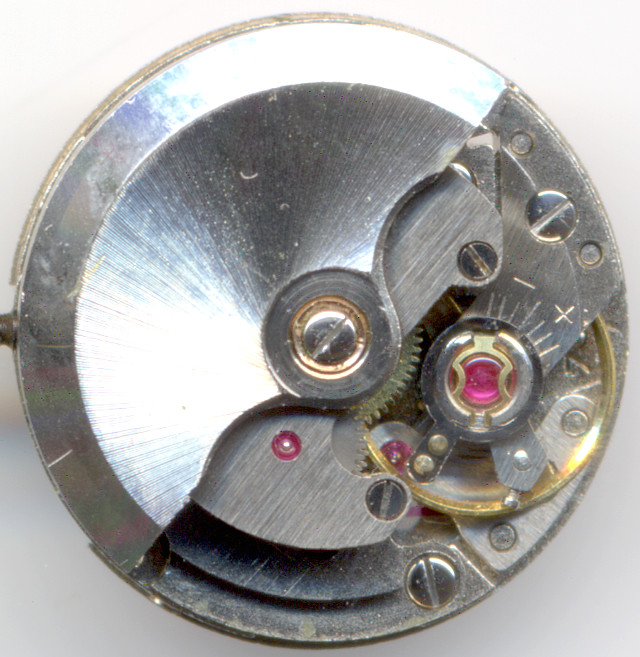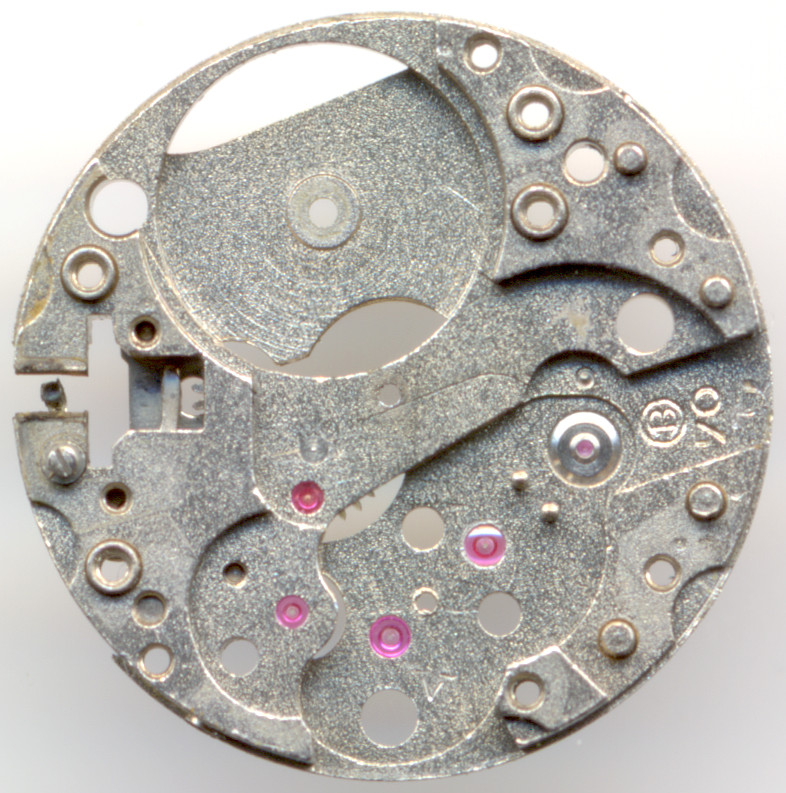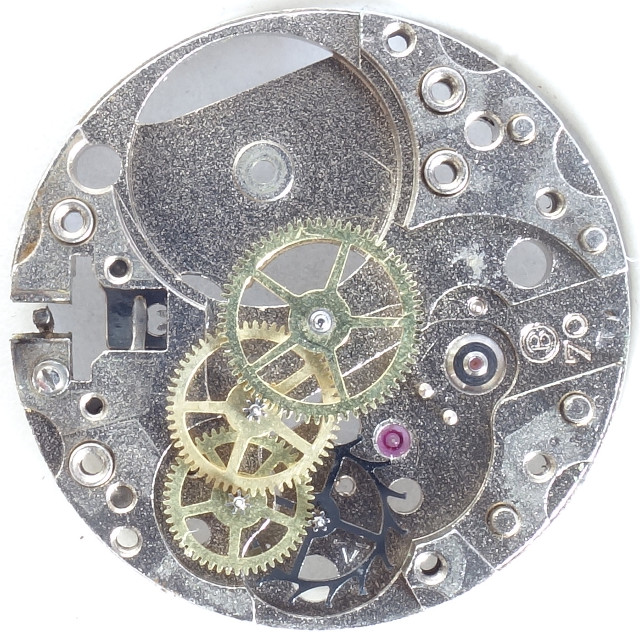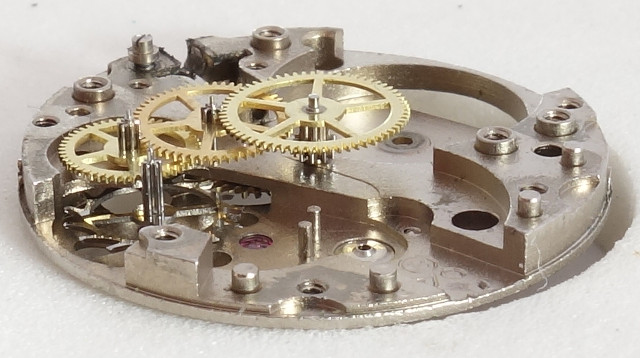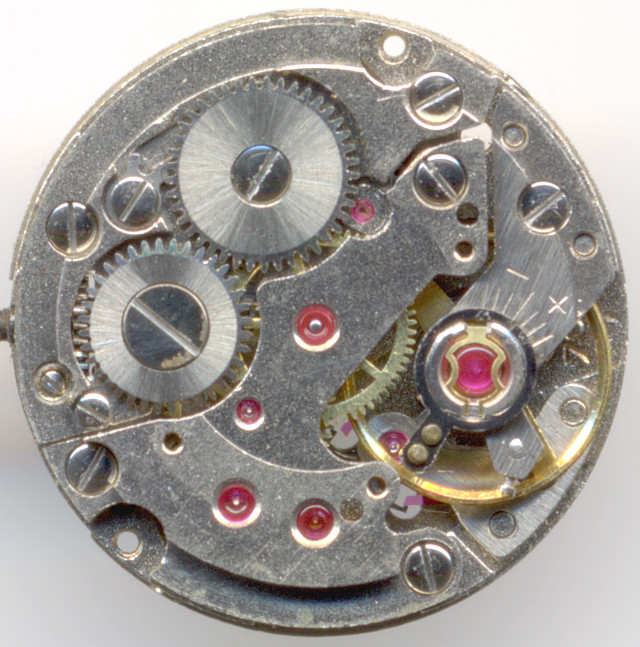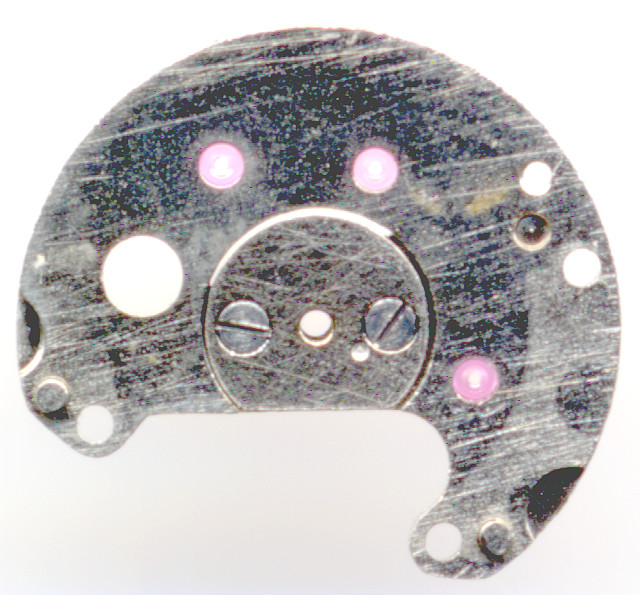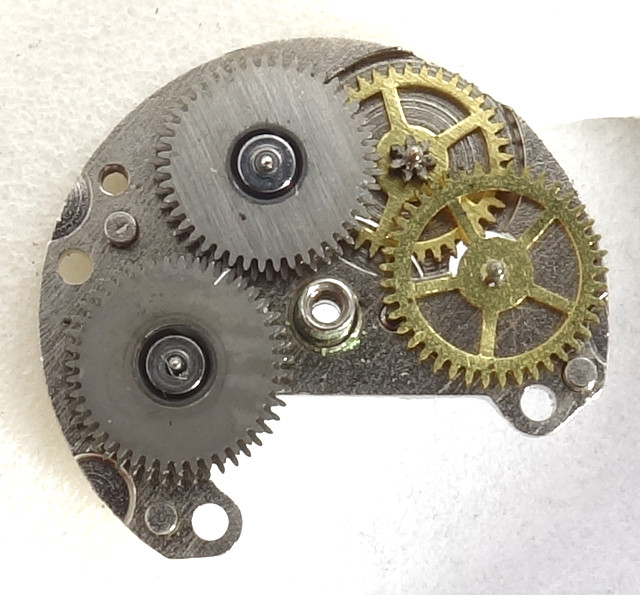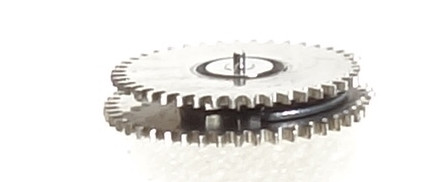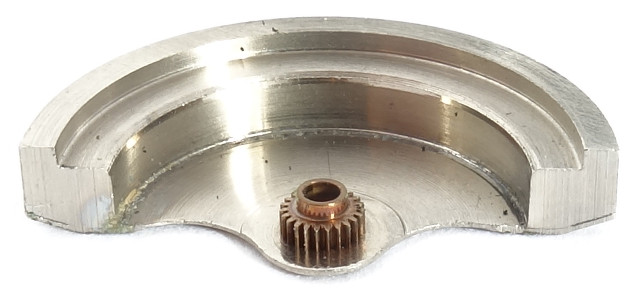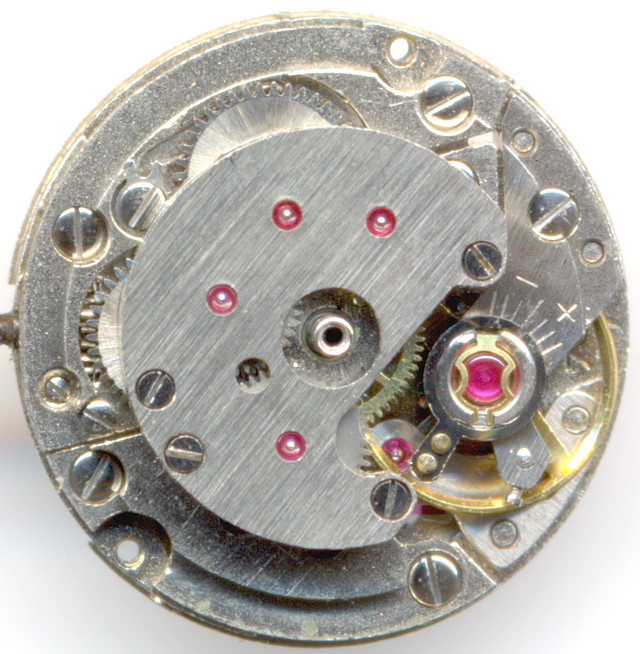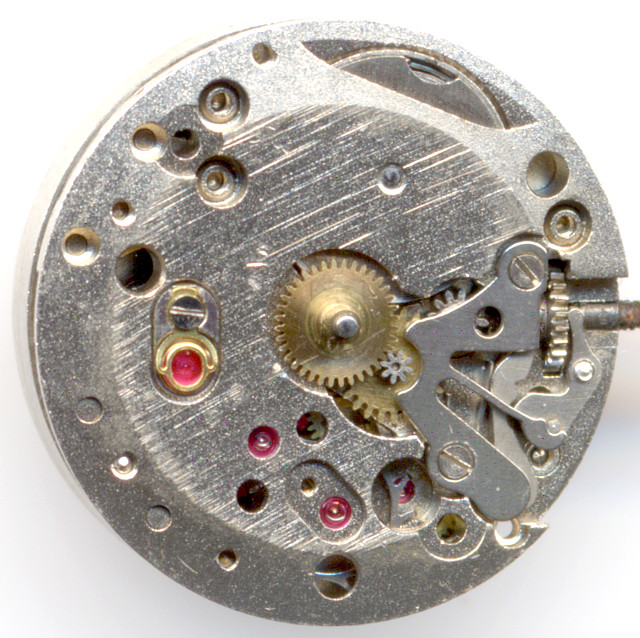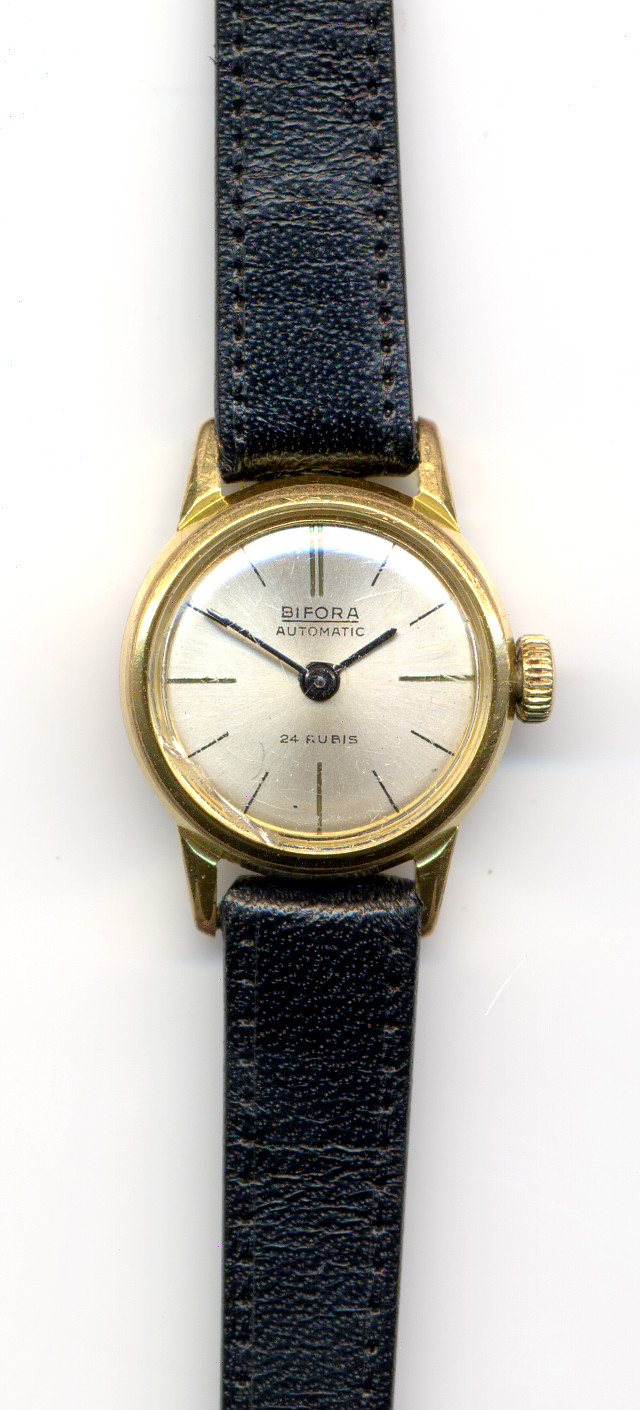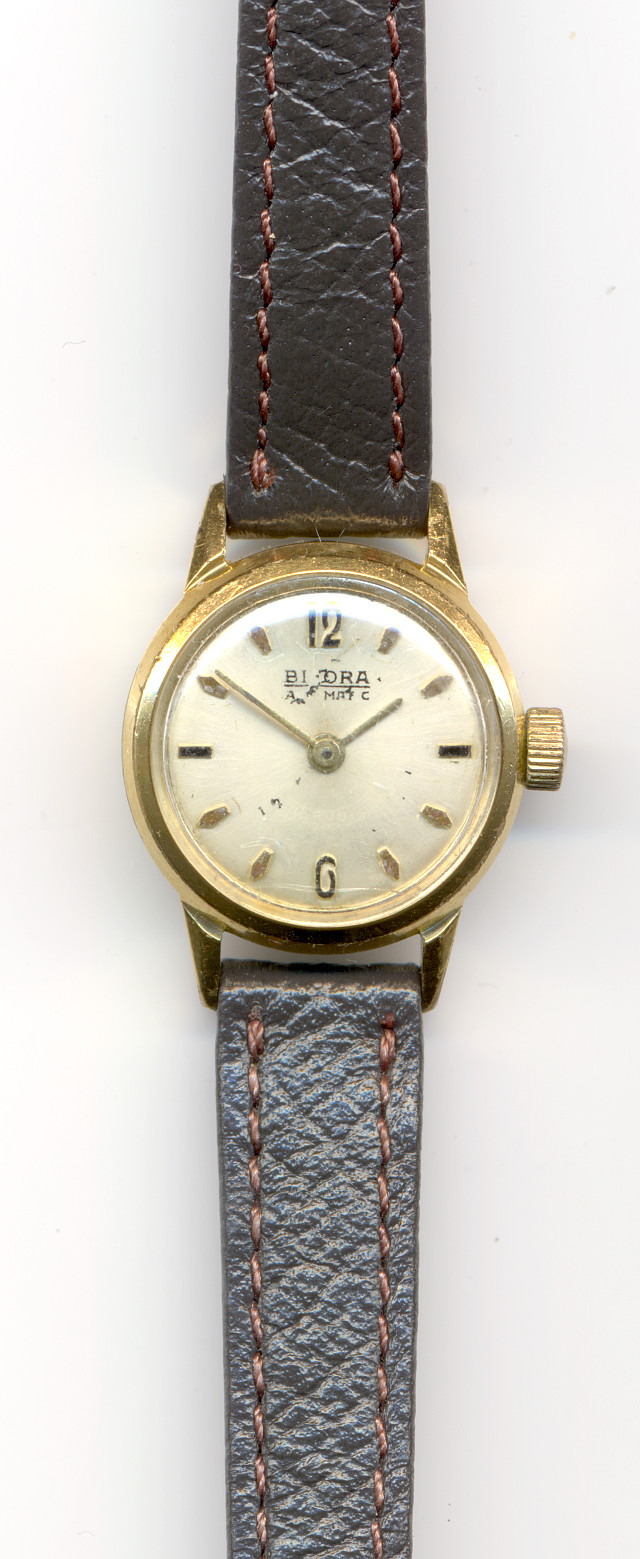Description
1958 Bifora not only released their smallest round manual wind movement, the caliber 70. It was one of the smallest selfwinding movements available and got the descriptions “Bifora 70” and “Bifora 70A” at the same time, so don’t confuse both movements!
This movement was produced for only five years, without a successor after ceasing production in 1962. Because of that this movement is pretty hard to find , especially in working condition.
Besides that, german selfwinding movements for ladies’ watches are a very rare species, in the literature, there are only three movements (or movement families) known: The Bifora 70A presented here, the DuRoWe 270 and the Förster 420.
The base plate is the same as in the manual wind version, all bearings, except those for minute wheel and mainspring barrel are equipped with rubies.
The gear train is also the same, as on the Bifora 70. It is made with very small wheel, has got directly driven center minute wheel, followed by third and fourth wheel and finally the silver toned escapement wheel.
The Bifora 70A has got a two leg screw-less anular balance, which is beared in two Incabloc shock protections (with the small version on the dial side) and beats contemporarily slow with 18000 A/h. It regulates a conventional pallet lever movement of swiss type. Probably due to the lack of space, the frequency can be corrected with the hairspring key only.
The gear train bridge shows for the fist time differences to the Bifora 70, since it is not only thinner in its center part, but also has got an additional bearing (at 0:30 o’clock) for the driving wheel of the selfwinding module, which connects to the ratchet wheel.
The selfwinding mechanism is made as a module, which is secured onto the gear train bridge. Of course, this greatly enlarges the height of the movement. The oscillating weight is axle beared, which is secured with two screws on the lower side of the selfwinding gear train bridge.
The selfwinding gear train is a modern construction, consisting of two ratchet wheel changers, whose lower wheels are connected to each other, while their upper wheels are driven by the oscillating weight, followed by a reduction and a driving wheel. They are all ruby-beared, so that the Bifora 70A counts with the 16 movement bearings a total 24 jewels. This unusual number and the lack of a center second makes it easy to identify.
The ratchet wheel changers act as mechanical recitifier and ensure, that regardless of the direction of the oscillating weight, the driving wheel always winds in the same direction.
The click decouples the both wheel in one direction and connects them in the other direction, just like a free running on a bicycle. This constriction as got a very small “dead” way, which means, that the oscillating wheel can wind quite efficient even when the movement is rather low. This is very important for movements with a small diameter.
The tiny oscillating weight has got a gear on its axle. The teeth length ensures, that only the upper wheels of the exchanger wheels are driven.
The selfwinding module is mounted with three screws onto the gear train bridge. The fourth screw (above the crown wheel) only secures the top module plate, so that it can the module can be released without danger. The oscillating weight is also secured by screw on top of the axle.
Die dial side is again identical to that of the Bifora 70 (manual wind), the only difference is a preparation cutout for a cap jewel of the escapement wheel.
Of course, this movement has got a yoke winding system. At 9 o’clock, you can spot the flat version (without lyra spring) of the Incabloc bearing.
Technical data
| Manufacturer: | Bifora |
| Caliber: | 70A |
| Size: | 7 1/4''' (measured: 15,8mm) |
| A/h: | 18000 |
| Number of jewels: | 24 |
| Escapement: | Pallet lever |
| Balance types: | Nickel anular balance |
| Shock protection(s): | Incabloc |
| Balance bearing / direction hairspring: | Clockwise |
| Moveable stud: | no |
| Adjust mechanism: | Hairspring key |
| Construction: |
|
| Construction type: | solid construction |
| Winding mechanism: | yoke winding system |
| Setting lever spring: | 3 hole(s) |
| Features: |
|
| Production period: | 1958 - 1962 |
| References: | Flume: K3 154 |
| Production years: | 1958-1962 |
| Inventory number: | 17036 |
